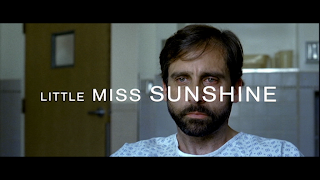Alex and I decided to begin researching film titles once we were under way with editing and the final stages of our construction. This was so we could relate it to our film instead of basing the film around the title.
From our knowledge of film titles, Alex and I liked the idea of just a one word or two word title.
A lot of film titles, not just thrillers, use a one word title so it is emphasised in one word and iconic. The short word is also easy to remember and easy to tell other people about (a way of selling the film). Examples are; Avatar (2009), Inception (2010), Superbad (2007), Limitless (
2010), Gladiator (2000), Watchmen (2009), Oldboy(2003), Wanted (2008), Milk (2008), Scarface (1983), Cars (2006), Ghost(1990) and so on.
Following our genre 'thriller/film noir', we researched titles on imdb for the titles of films from this genre. IMDB holds nearly every film title in the world over years and year so it was easy to do our research here.
Some examples we found of various types of thrillers and hybrids; Super 8 (2011 dir. JJ Abrams) sci-fi thriller, Psycho (1960. dir Alfred Hitchcock) horror thriller, Jaws (1975 dir.
Steven Spielberg) horror thriller. Super 8 refers to the camera which is used in the film. A character in Psycho is, a psycho. Jaws refers to the teeth of a shark which is what the film revolves round. Other film titles with one word under the thriller genre are; Memento, Inception, Seven, Fargo, Serendipity, Taken.
The title for 'Taken' refers to the action of taking something as this film involves a girl being taken away from her father. Inception is a word which means the start of something but for the 2010 film by Christopher Nolan
is it a new word which refers to an action within the film. Seven refers to the 7 deadly sins which feature in the film. Fargo refers to the setting of the film. The word Memento is known as something important which is kept like a souvenir of a person or event. The film is about a man who's wife was killed but he suffers memory loss and so he tattoos stuff to remember on his body and takes pictures often, this is considered his mementos. Serendipity is defined as a 'happy accident' which is what the romance film centres around.
Other titles are usually names. Briefly mentioned above is the drama biopic Milk which is about
Harvey Milk an American activist. Animation Coraline is about a young girl with the same name. A very popular title which was first created as a comic is the title 'Batman'. The boxing film Rocky is about a fighter named Rocky Balboa. Another animation film, Shrek, has the main character with the same name.
We thought about this and liked the idea of the name of our actor (Gavin) but spelt in a different way.
Gavyn - We liked this idea as it look unusual, bu after research we found that this is a common spelling for the name in certain parts of the world and so it would not have the same impact all across the world.
Full Blast - Even though this title is two words, it's a short title and implies that there would be explosions, deaths and guns used in the film which reflect ours genre. This was our title for a few days and when it came to editing, we tried the title out on our film but we found it did not match with what the visuals were representing.
Inspector - This was our final title idea. Inspector connotes to suits and people in business which is what our main character is involved in. The title and it's connotations fits in with the thriller film noir genre because of the suits and upper class characteristics. We messed around with having 'The Inspector' or just 'Inspector' and decided that Inspector sounded better as it stands alone and adds mystery because the main character isn't necessarily
the Inspector.




























































